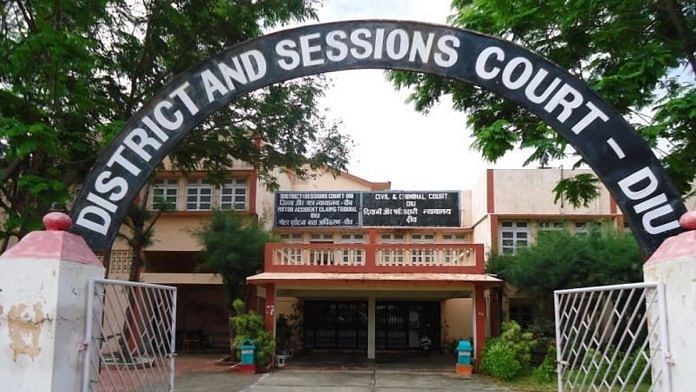
New Delhi: From unavailability of lawyers to cases being stayed, the latest National Judicial Data Grid (NJDG) data, collated this year, reflects some of the key reasons for pendency in India’s subordinate courts. There are nearly 2 crore criminal and civil cases pending before the district judiciary, for which reasons for delay have been recorded in the data available on the National Judicial Data Grid (NJDG). Although the overall figure of pendency or pending cases before district courts is much bigger—more than 4 crore, with a little over 3 crore of these being criminal cases and the rest civil—reasons for delay have been provided for only about 1.
92 crore of these. Of these approximately 1.92 crore cases, about 1.

51 crore cases are criminal, whereas 41.62 lakh are civil in nature. Priyamvadha Shivaji, a research fellow at the Justice, Access, and Lowering Delays Initiative (JALDI) team at the Delhi-based nonprofit Vidhi Centre for Legal Policy told ThePrint that the “number of old cases pending before the courts continue to remain the same, irrespective of how many new cases are instituted”.
“Essentially, no specific attention is being paid to older, pending cases. A directive has also been given to all courts that cases pending for more than five years have to be given frequent attention, listed frequently and so on.” Underlining major factors that contribute to this pendency, Shivaji said it could be because the longest pending cases have not been given any due.
“With the influx of new cases every year, the caseload is only going to pile up,” she said. Also Read: With new portal on courtroom humour, Delhi HC upholds the right to be funny The most commonly cited reason for delay in these cases was unavailability of counsel—in more than 66 lakh cases, with more than 15 lakh of these cases being civil, and the remaining being criminal in nature. This was followed by the “accused absconding” in more than 38 lakh cases, where 186 were civil suits.
These civil suits could have been possible in situations where the accused were summoned by the court but failed to comply with the law, among others. Similarly, over 28 lakh cases were delayed on account of witnesses. More than 25 lakh such cases were criminal in nature.
Besides this, more than 24 lakh cases were stayed for a host of reasons. Of these, more than 17 lakh cases were criminal in nature. These cases also ranged from magisterial cases to civil suits to sessions cases, among others.
According to a 2023 report published by JALDI, titled ‘A Framework for Extremely Delayed Cases’, the cases which are often delayed time and again are listed by courts with decreasing frequency over the years, until they ultimately disappear from the system. “Lack of ability in one or both the parties to push for steady progress of a case, presence of perverse incentives with one or both parties to keep the case pending, lack of proactive measures by the courts to ensure time-bound progress in cases” are some of the reasons why cases continue to remain pending too. This ever-increasing backlog also reflects poorly on the ability of Indian courts to deliver timely justice, it adds.
In the overall figure of pendency before district courts (4,49,46,546), a little over 3.49 crore cases are criminal in nature. Also worth noting is that an overwhelming majority of these cases are magisterial.
As of 16 September, more than 2 crore such magisterial cases were pending before the courts. This figure is followed by over 56 lakh civil suits and over 25 lakh sessions cases. Besides this, around 8 lakh (8,58,282) Motor Accident and Claim Petitions (MACP) are also pending before lower courts.
Other categories of pending cases include miscellaneous criminal applications, miscellaneous civil cases, civil appeals, criminal appeals, juvenile cases, arbitration matters and election petitions, among others. While more than 17 lakh pending cases are stuck at the application hearing and witness-examination levels, over 9 lakh such pending cases are stuck at the written submissions stage and the notice or summons stages. Priyamvadha Shivaji said that when it comes to the stage at which these cases were pending, more cases are pending at the early stages.
“For civil cases, it’s usually at the summoning stage and for criminal cases, it’s usually at the stage relating to the appearance of the accused.” She also said that at a later stage, when arguments commence, several cases end up being stuck as well, since during everyday courtroom proceedings, judges don’t have enough time to listen to lengthy arguments in all cases. “On any given day, one look at the judge’s cause list will reveal hundreds of cases listed on it,” she told ThePrint.
Finally, she said that, if courts don’t make a concerted effort to dispose of existing cases, this issue won’t be solved, while adding that the overall number of pending cases has only increased over the years. Referring to an important concept called the ‘backlog creation rate’, which was cited in the 245th Law Commission of India report on backlog and arrears, Shivaji said, “Essentially, the backlog creation rate refers to the ratio of institution to disposal in a given year.” “An ideal scenario for the courts would be to have a BCR of either one or less than one, as that implies that they are able to keep pace with the pendency i.
e. they are able to dispose of as many, or more, cases than they receive each year. However, the NJDG figures show that this is a very unlikely scenario in almost every district court in India.
The BCR is likely to be far greater than one,” she added. In 2024, more than 26 lakh (26,69,108) new cases were instituted before the district judiciary, whereas nearly 30 lakh (26,94,788) cases were disposed of. However, between 2022 to 2023, more than 37 lakh cases were instituted and disposed of, each year.
For the year 2021, more than 31 lakh cases were instituted, and over 25 lakh were disposed of. Upon comparing this with the number of cases instituted and disposed of in the subsequent years, i.e.
, 2022-23, the figure of fresh cases and of disposal increased significantly over the years. While there was a dip in the COVID years (2020-21), owing to courts not functioning at their full capacity, the overall trend has been an upward one. (Edited by Amrtansh Arora) Also Read: Jodhpur lawyer bearing delivery expenses of minor rape victim is ‘grateful the court chose him’ var ytflag = 0;var myListener = function() {document.
removeEventListener('mousemove', myListener, false);lazyloadmyframes();};document.addEventListener('mousemove', myListener, false);window.addEventListener('scroll', function() {if (ytflag == 0) {lazyloadmyframes();ytflag = 1;}});function lazyloadmyframes() {var ytv = document.
getElementsByClassName("klazyiframe");for (var i = 0; i < ytv.length; i++) {ytv[i].src = ytv[i].
getAttribute('data-src');}} A Picture speak a 1000 words. It would have been better if a simple graphic has been prepared using the simple desktop XLS to understand these figures better Save my name, email, and website in this browser for the next time I comment. Δ document.
getElementById( "ak_js_1" ).setAttribute( "value", ( new Date() ).getTime() );.














